17 Creative Ways to Display Products in Retail
Discover creative ways to enhance the display of products in retail. Learn innovative techniques and strategies to engage customers through display solutions.
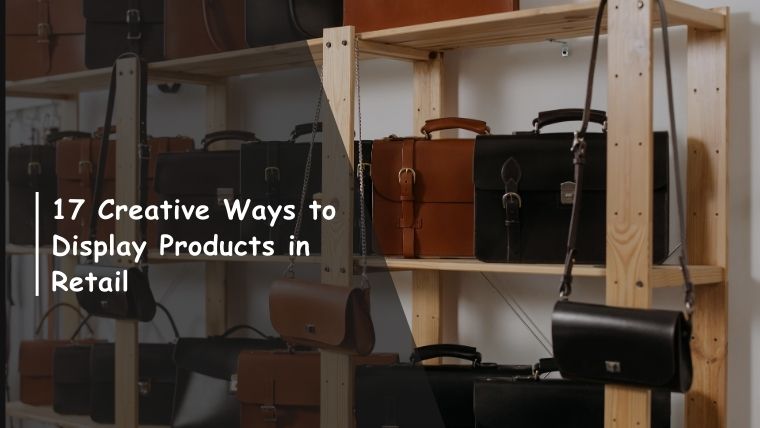
Discover creative ways to enhance the display of products in retail. Learn innovative techniques and strategies to engage customers through display solutions.

In the retail environment, the display of products plays a crucial role in attracting customers, encouraging purchases, and enhancing the overall shopping experience. A well-thought-out display showcases your products and sets the tone for your brand.
According to a report by Grand View Research, the commercial display market in India is projected to reach a revenue of USD 2,723.6 million (₹20,570 crore) by 2030. This growth indicates a significant investment in retail displays, highlighting their importance in the retail sector.
This article explores creative ways to display products in retail, highlighting the importance of strategic planning, innovative design, and customer engagement.
A retail display refers to any arrangement of products within a store designed to attract attention, promote sales, and create an immersive shopping experience. Displays can take various forms, including shelves, mannequins, window displays, or digital setups, and are strategically placed throughout the store.
They play a significant role in guiding customers’ buying decisions, whether through product arrangement, signage, or interactivity.
Now, let’s look at why they are so important for your store’s success.
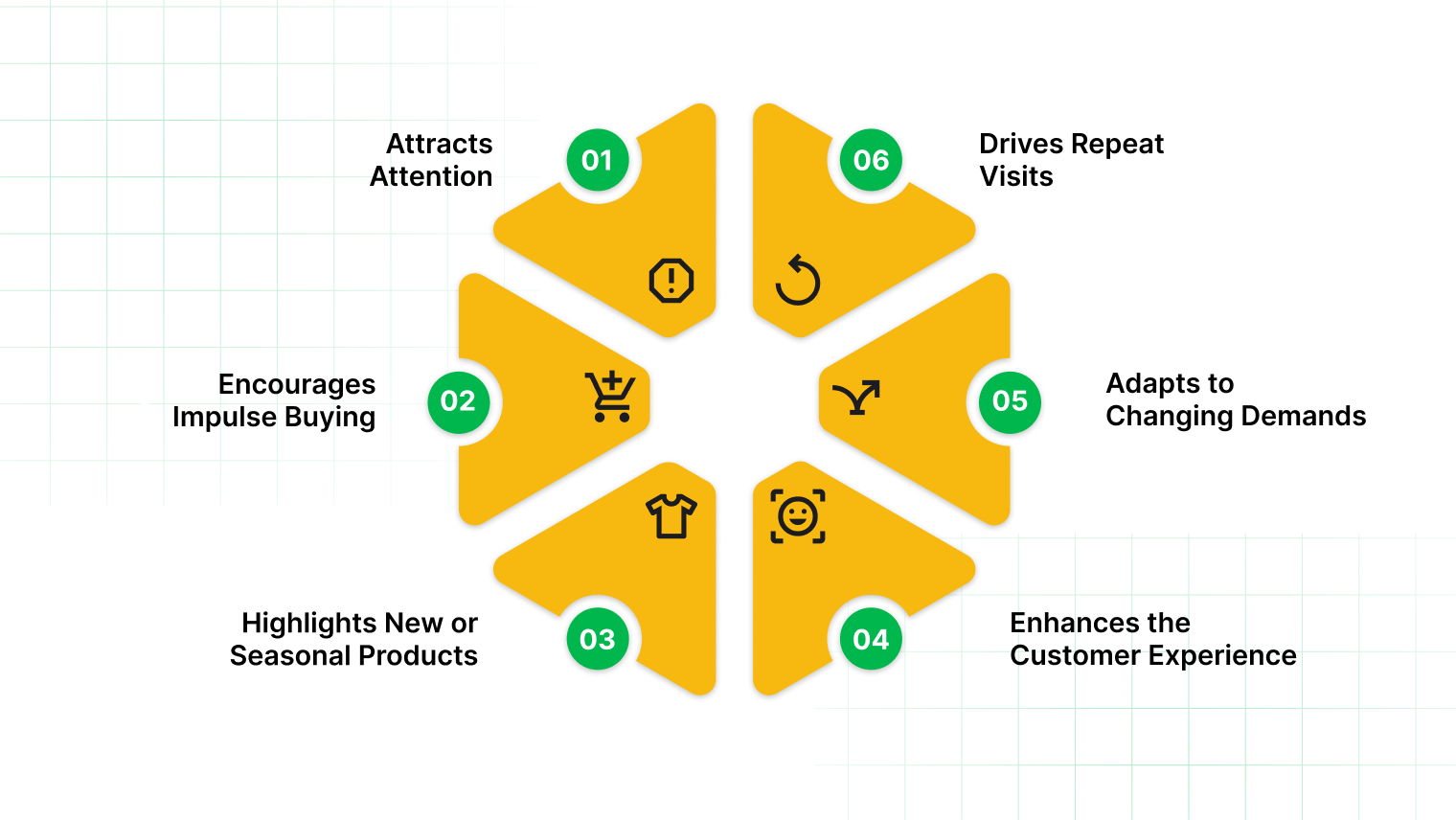
Retail displays are essential because they significantly impact consumer behaviour. A well-designed display can attract customers' attention, encourage impulse buying, and boost sales. Below are key reasons why retail displays are so important:
Also Read: Popular Retail Store Colour Ideas (With Tips and Examples)
Let’s now look at how to create the perfect retail display.

Creating an effective retail display requires careful planning and execution. The following steps will guide you through the process:
Before designing a display, it’s essential to understand your store's layout, target market, and product range. Define the key goals of your display, whether it’s to highlight new products, seasonal promotions, or bestsellers.
There are various types of retail displays, including permanent fixtures, temporary setups, and interactive displays. Each type serves a specific purpose and can be used in different parts of the store.
Localisation refers to tailoring your displays to reflect the preferences and tastes of the local market. Consider factors such as local culture, trends, and consumer habits when designing your retail displays.
Look for inspiration from successful brands and stores, both locally and internationally. Pay attention to what works well in other retail environments and adapt these ideas to suit your store.
Your store teams are invaluable when it comes to creating effective displays. They interact directly with customers and can provide insights into what products are most popular or what display setups generate the most attention.
Not all areas of your store are the same. The placement of displays should be strategic and adapted to the space they occupy. High-traffic areas, near the entrance or checkout, are ideal for promoting impulse buys.
Also Read: Premium Cosmetic Display Counter for Beauty Shops
Now, let’s explore some creative ideas to transform your store.
Here are some innovative retail display ideas that can take your store’s visual merchandising to the next level. Each idea is accompanied by implementation tips, pros and cons, and examples of how to use them effectively.

Interactive digital mirrors allow customers to virtually try on products or see them in a new context, enhancing their shopping experience. It’s perfect for fashion and beauty stores, offering a shopping experience without physical trials.
When and Why to Use This Approach
Implementation Tips
Pros
Cons
Example
A beauty store uses digital mirrors for virtual makeup trials, allowing customers to try different looks without applying products. This interactive experience enhances customer engagement and boosts sales.
Expanda Stand’s Garment Browsers are a great complement to digital mirror displays. Showcase your clothing and accessories in a sleek and organised manner, making browsing easy and enhancing the overall shopping experience.
Suspended displays create a dramatic effect by making products appear as though they’re floating. Ideal for light or small items, they draw the customer’s attention and offer a unique viewing angle.
When and Why to Use This Approach
Implementation Tips
Pros
Cons
Example
A jewellery store uses gravity-defying displays to showcase necklaces and rings, giving customers a clear, unobstructed view of the products from every angle.
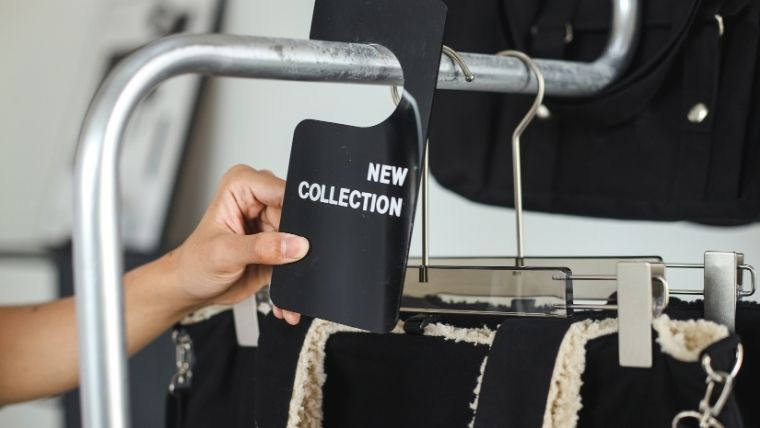
Pop-up displays allow you to quickly and easily create seasonal or event-themed setups. These displays transform specific areas of the store to reflect holidays, promotions, or new collections, keeping the store’s appearance fresh and exciting.
When and Why to Use This Approach
Implementation Tips
Pros
Cons
Example
A fashion store sets up a pop-up display showcasing winter coats and scarves as the cold season begins, drawing attention and creating urgency to purchase before stock runs out.
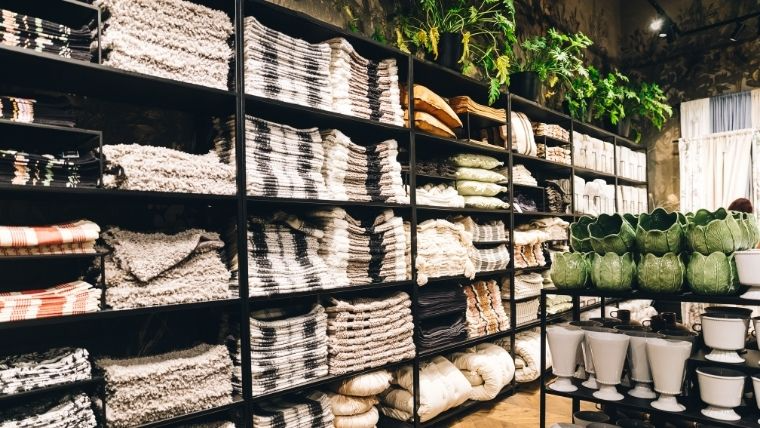
Living product ecosystems use plants and greenery alongside products to create an immersive, natural display. It helps enhance its appeal and align with the growing demand for environmentally conscious brands.
When and Why to Use This Approach
Implementation Tips
Pros
Cons
Example
A sustainable home goods store integrates succulents and indoor plants into their product displays, creating a relaxing and eco-conscious environment that highlights their green product offerings.
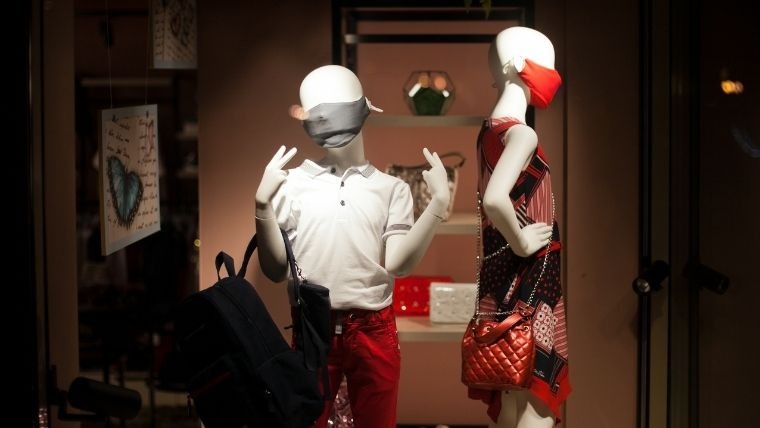
Storytelling timeline displays showcase the evolution of a product or brand, engaging customers with a narrative that connects them to the products. These displays are ideal for brands with a rich history or products that have an interesting backstory, such as tech gadgets or heritage fashion items.
When and Why to Use This Approach
Implementation Tips
Pros
Cons
Example
A luxury watch brand displays the history of timepieces through a timeline, showing how their designs and technology have changed over the years, engaging customers and enhancing the brand’s legacy.
Sensory immersion zones engage customers by stimulating their senses—sight, sound, touch, and smell. This approach works especially well in stores selling beauty, wellness, or lifestyle products.
When and Why to Use This Approach
Implementation Tips
Pros
Cons
Example
A beauty store uses soft lighting, soothing music, and essential oil diffusers in a dedicated zone where customers can try out skincare products in a calming environment.
Augmented Reality (AR) product visualisation allows customers to virtually interact with products in real-time. This can be particularly useful for items like furniture, clothing, or home décor.
When and Why to Use This Approach
Implementation Tips
Pros
Cons
Example
A furniture store implements AR to let customers visualise how a sofa would look in their living room, providing a realistic preview before purchase.

Community-generated content walls showcase user-created photos, reviews, or social media posts. These walls encourage customer participation, create a sense of community, and build trust by showcasing real-life experiences with products.
When and Why to Use This Approach

Implementation Tips
Pros
Cons
Example
A clothing store sets up a wall showcasing Instagram photos of customers wearing their clothes, encouraging shoppers to share their own looks and be featured.
Modular flexible display systems offer adaptability in showcasing different products and changing store layouts. These displays can be rearranged or expanded to accommodate new product lines or seasonal changes.
When and Why to Use This Approach
Implementation Tips
Pros
Cons
Example
A bookstore uses modular shelving units that can be rearranged to feature new book releases, allowing for easy updates based on current promotions.
Expanda Stand’s modular retail display systems allow you to easily adjust your store layout and keep your displays fresh. Perfect for stores with changing product lines, these flexible solutions maximise your store’s potential.

Gondola displays are free-standing shelving units that allow for easy access to a variety of products. They are often placed at the end of aisles or in the centre of the store, making them ideal for showcasing seasonal promotions, high-demand products, or new arrivals.
When and Why to Use This Approach
Implementation Tips
Pros
Cons
Example
A supermarket uses gondola displays at the end of aisles to feature seasonal snack promotions, encouraging customers to grab a snack while shopping.
Expanda Stand’s Gondola Shelving is perfect for displaying high-traffic products and seasonal items. Create a visually appealing and easy-to-navigate display that attracts customers and encourages purchases.
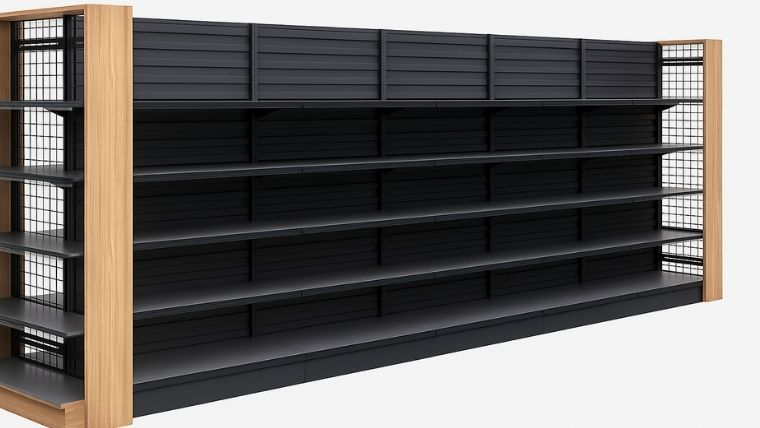
Sustainable and eco-friendly displays focus on using recycled, biodegradable, or energy-efficient materials. These displays resonate with environmentally conscious customers and align with the growing demand for sustainable retail practices.
When and Why to Use This Approach
Implementation Tips
Pros
Cons
Example
A home goods store uses wooden crates and recycled cardboard for their product displays, reflecting their commitment to sustainability and eco-friendly products.
Cross-merchandising involves placing complementary products together to encourage customers to purchase related items. For example, pairing coffee with mugs or pasta with sauce, this display type increases the average transaction value by prompting additional purchases.
When and Why to Use This Approach
Implementation Tips
Pros
Cons
Example
A kitchenware store creates a cross-merchandising display by pairing cookbooks with utensils and ingredients, encouraging customers to buy all the items needed for cooking a new recipe.
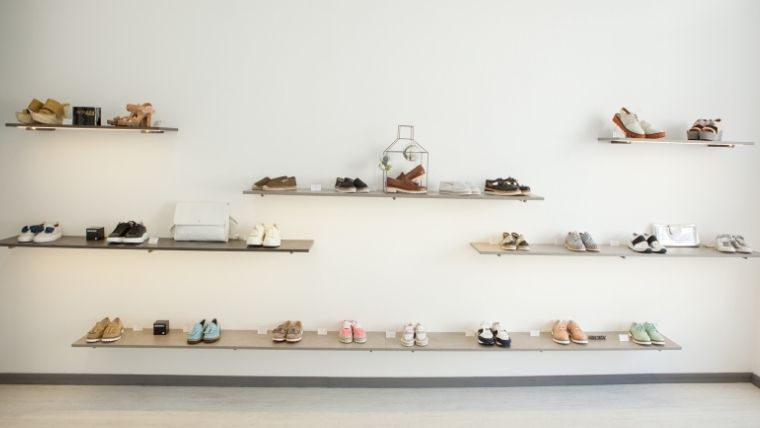
Minimalist product displays focus on simplicity and elegance, featuring only a few items that are carefully curated to attract attention. This approach reduces clutter and lets the products stand out on their own.
When and Why to Use This Approach
Implementation Tips
Pros
Cons
Example
A high-end watch store uses minimalist displays with one or two watches on a sleek, reflective surface, allowing the product’s craftsmanship to shine.
Entryway displays are strategically placed at the entrance of a store to grab the attention of customers as they walk in. These displays often feature promotions, seasonal items, or bestsellers, serving as a powerful introduction to the store's offerings.
When and Why to Use This Approach
Implementation Tips
Pros
Cons
Example
A retail clothing store sets up an entryway display featuring their latest seasonal collection, encouraging customers to browse more throughout the store.
Standalone displays are freestanding fixtures used to showcase specific products in the middle of aisles or open spaces. These displays are often used for promoting new arrivals, seasonal goods, or special promotions.
When and Why to Use This Approach
Implementation Tips
Pros
Cons
Example
A toy store uses a standalone display in the centre of the store to showcase the latest toy collection, drawing children’s attention as they pass by.
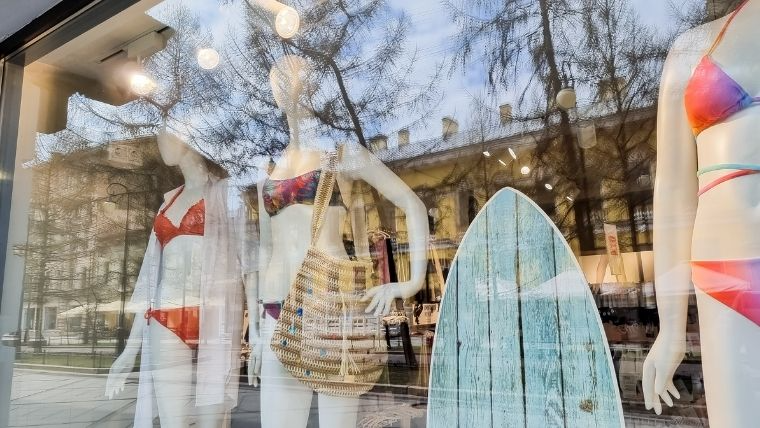
Window displays are crucial for attracting attention from passersby and creating an inviting atmosphere for customers. Whether open, closed, or semi-closed, these displays can showcase products in various ways, ensuring they stand out.
When and Why to Use This Approach
Implementation Tips
Pros
Cons
Example
A fashion store uses an elevated window display to showcase its latest collection, featuring elegant mannequins surrounded by soft lighting, drawing in customers as they pass by.
PDQ (Pretty Damn Quick) displays are pre-packaged, ready-to-use displays that are easy to set up and reposition. They are ideal for promotions and seasonal items, offering a simple and cost-effective way to display products.
When and Why to Use This Approach
Implementation Tips
Pros
Cons
Example
A supermarket uses PDQ displays for snack foods at the checkout, encouraging last-minute impulse buys while customers wait in line.
Also Read: How to Choose the Right Display Rack for Your Retail Store: A Complete Guide
To further inspire your creativity, here are some other unique ways to display products in retail.
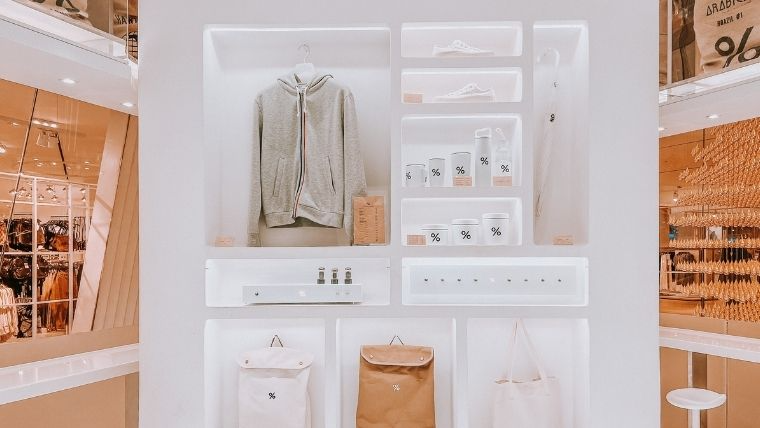
There are many creative ways to showcase products in retail, each designed to attract attention, increase visibility, and encourage impulse purchases. Here are some additional display methods to consider:
Also Read: Understanding Specialty Stores: Meaning & Strategies
Next, let’s look at how different sectors can use unique retail display ideas.
Different retail sectors have unique needs when it comes to product displays. Here are some creative display ideas tailored to various industries:
Use interactive digital mirror displays and modular flexible display systems to showcase clothing and accessories. This approach offers customers a chance to try items virtually and engage with interactive displays.
Sensory immersion zones can work wonders in beauty stores, allowing customers to engage their senses with scents, textures, and sounds that complement the products.
Living product ecosystems with plants and eco-friendly displays are perfect for home decor and sustainable product lines. Customers can see how the products fit into a natural, real-world environment.
Augmented reality (AR) product visualisation is ideal for electronics stores, allowing customers to interact with gadgets in a virtual environment before purchasing.
Expanda Stand’s home appliance displays are perfect for showcasing seasonal electronics, such as new smart TVs, during peak promotional periods. Highlight high-demand items in the best way possible, creating a focal point for customers.
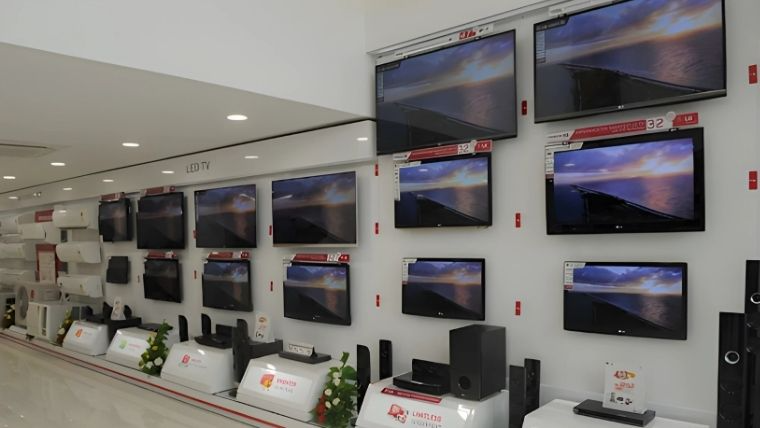
Next, let’s explore some common retail display mistakes and how to avoid them.

Even the best-intentioned displays can fall flat if not executed correctly. Here are some common retail display mistakes and tips to avoid them:
Too many products can overwhelm customers and make it challenging for them to find what they need.
Solution: Keep displays clean, neat, and organised with a focus on a few key products at a time.
Without proper lighting, even the most attractive displays can go unnoticed.
Solution: Ensure your displays are well-lit, using adjustable lighting to highlight key products and create the right atmosphere.
Disorganised or mismatched displays can confuse customers and create a jarring experience.
Solution: Maintain a consistent theme across all displays, ensuring that each one aligns with your store’s branding and the products you’re showcasing.
If displays block pathways or are placed in hard-to-reach areas, they can disrupt the shopping experience.
Solution: Ensure your displays are strategically placed where they don’t interfere with customer movement but still attract attention.
Excessive promotional displays can create a chaotic atmosphere in the store, making it feel overly focused on sales rather than providing a cohesive and enjoyable shopping experience.
Solution: Be strategic with promotions, focusing on seasonal or best-selling items to maintain balance and interest.
Also Read: Is a Steel Rack Worth It? Here’s What Experts Say!
Now, let’s explore how Expanda Stand’s display solutions can help transform your retail space.
At Expanda Stand, we provide innovative retail display solutions that are tailored to optimise product visibility and enhance the shopping experience. Our retail displays are designed to increase product appeal and improve customer engagement.
Utilise Gondola Shelving to create organised, easily accessible displays for grocery and FMCG products, improving customer flow and maximising shelf space.
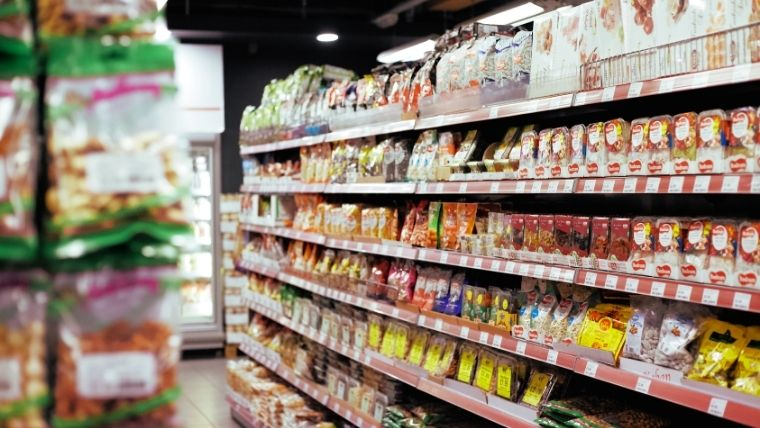
Showcase beauty products with our elegant Cosmetic Displays, increasing visibility and enticing customers with an engaging presentation.
Display products like Iron Box Refrigerators, Washing Machine Display Podiums, and TV Racks to highlight large appliances and home essentials in an organised, appealing manner.
Use Ball, Bat, Racket, and Shoe Displays to showcase sporting equipment attractively, driving customer interest and enhancing the in-store experience.

Garment Browsers and Display Stands make clothing items easy to browse, increasing the likelihood of purchase by enhancing the customer experience.
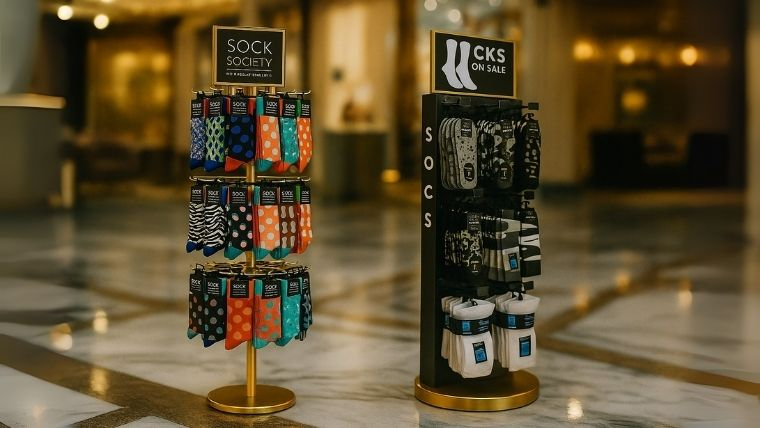
Display products like End Cap Top Branding Displays, Pipes Storage Racks, and Power Tools with high-quality fixtures to create an organised and engaging shopping environment.
With Expanda Stand’s retail display solutions, you can optimise space, enhance product visibility, and create an attractive store layout that increases customer satisfaction and sales.
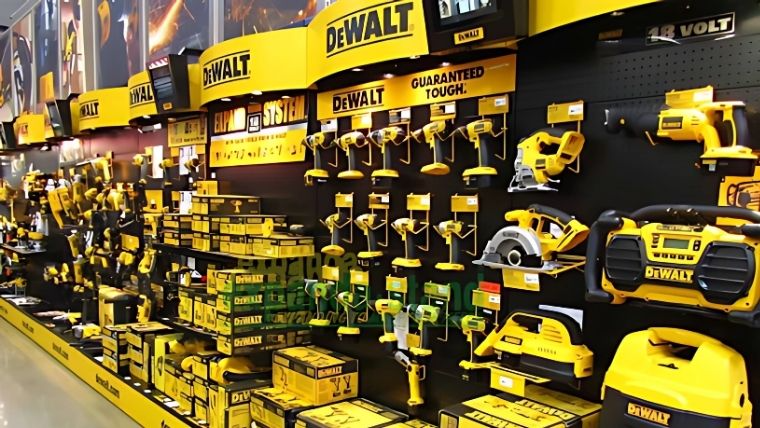
The display of products in retail plays a vital role in shaping customer perceptions, encouraging purchases, and driving sales. From interactive displays to minimalist setups, creative product displays can enhance the shopping experience and differentiate your store from competitors.
With Expanda Stand’s retail display solutions, you can create the perfect display setup tailored to your store’s needs, ensuring an engaging shopping experience for your customers.

Contact us today to explore how our retail display solutions can transform your store.
Interactive displays, like digital mirrors, allow customers to engage with products virtually, creating a memorable experience that drives sales and customer loyalty.
These displays grab attention with their unique, floating appearance, perfect for showcasing lightweight products like jewellery or accessories in a visually striking way.
Pop-up displays create excitement and urgency by highlighting seasonal or promotional items, encouraging customers to act quickly and make a purchase.
Living product ecosystems use plants and natural elements to highlight eco-friendly or sustainable products, creating a calming atmosphere that resonates with customers.
Cross-merchandising places complementary products together, prompting customers to buy related items they may not have planned to purchase, increasing the average transaction value.
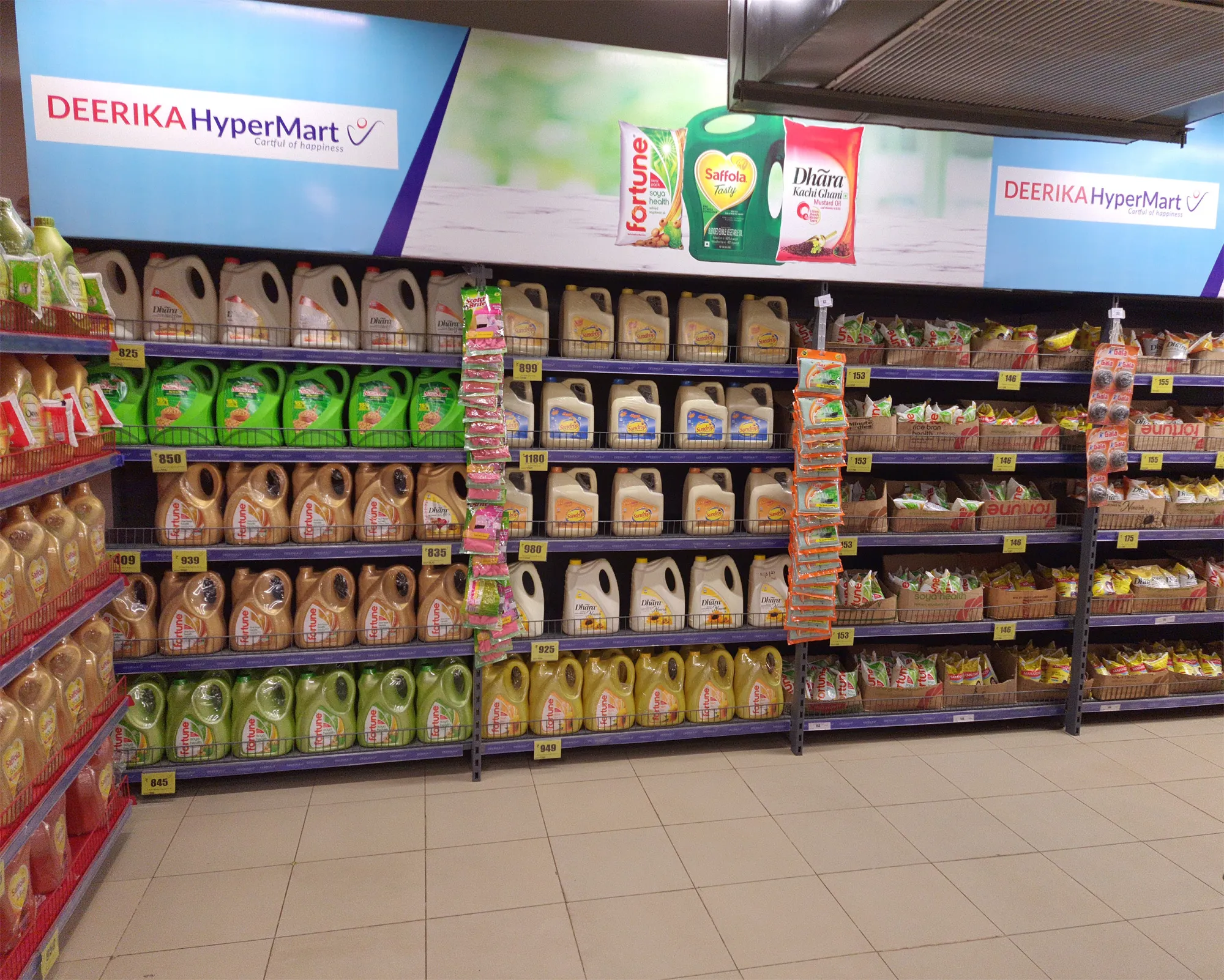
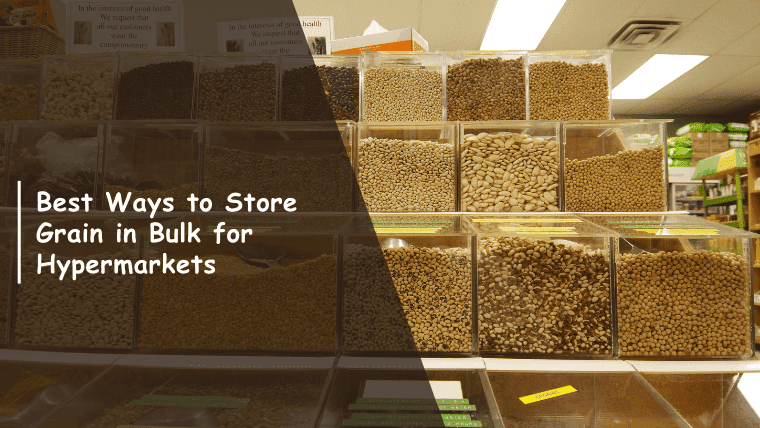
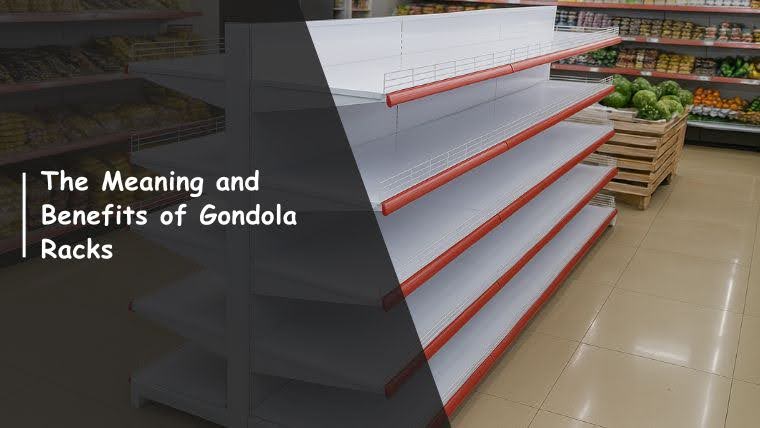
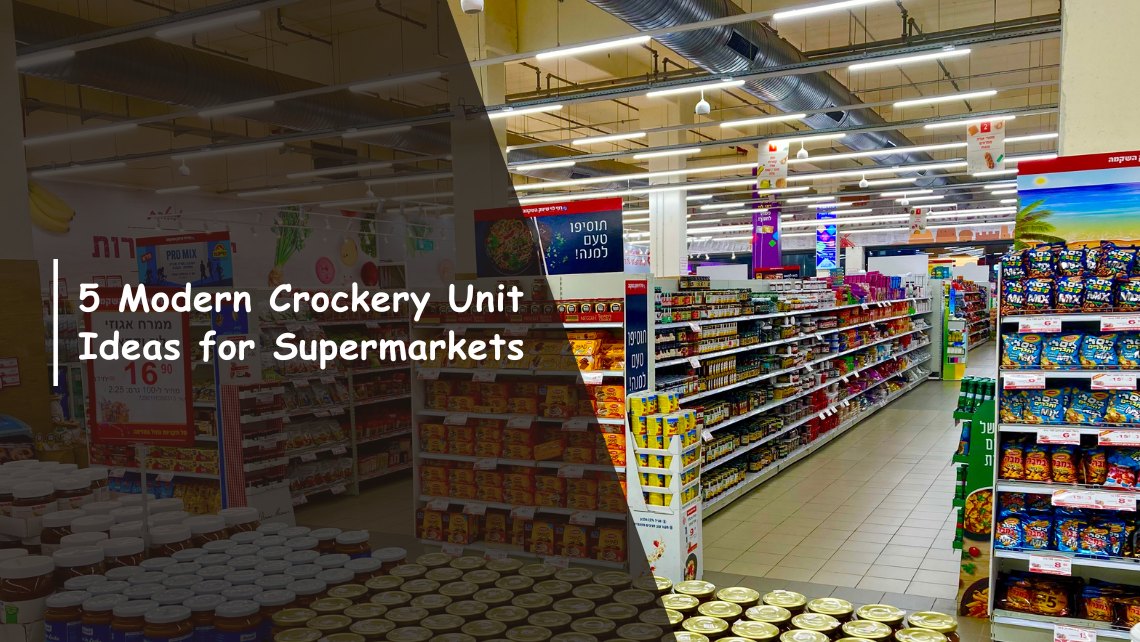
Ready to Upgrade Your Process Operations?